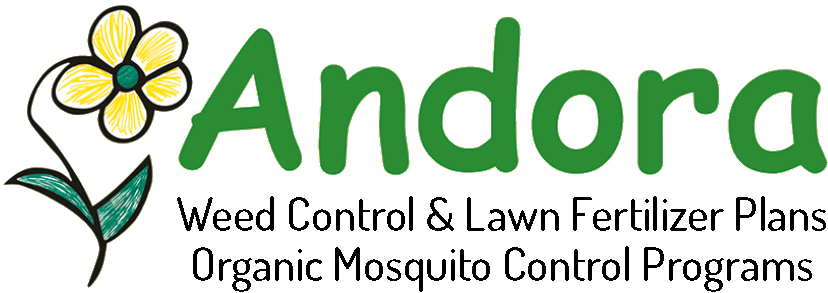Maintaining a lush, healthy lawn can be a challenge. As summer fades and fall approaches, it’s the perfect time to assess your lawn’s health and determine if it could benefit from aeration and seed renovation. These essential lawn care practices can rejuvenate tired grass, correct underlying issues, and prepare your lawn for the colder months. But how do you know if your lawn needs these treatments? Here are the top signs that your lawn could use fall aeration and seed renovation.
1. Compacted Soil
One of the most common reasons to aerate your lawn is soil compaction. Over time, foot traffic, heavy equipment, and even natural soil settling can cause the soil to become compacted. This compaction restricts the flow of air, water, and nutrients to the grassroots, leading to poor growth and a thinning lawn. If you notice that your lawn feels hard underfoot, or if water tends to pool on the surface after a rainstorm instead of being absorbed, compacted soil is likely the culprit. Fall is the ideal time to aerate compacted soil, as the process involves removing small plugs of soil to loosen the ground, allowing your lawn to “breathe” again.
2. Thinning Grass
A healthy lawn should have thick, dense grass. If your lawn is starting to look thin and patchy, it’s a clear sign that it needs some attention. Thinning grass can result from various factors, including soil compaction, poor nutrient absorption, and summer stress. Aeration helps address these issues by improving soil conditions while overseeding (the process of planting new grass seed over existing grass) helps fill in those thin areas with new growth. A fall renovation can help your lawn recover from summer damage and prepare for a strong comeback in the spring.
3. Excessive Thatch Build-Up
Thatch is a layer of organic matter that builds up between the grass and the soil surface. While a thin layer of thatch can be beneficial, too much thatch can prevent water, air, and nutrients from reaching the soil, leading to unhealthy grass. If your lawn feels spongy or you can see a thick layer of brown material at the base of your grass blades, you likely have excessive thatch. Aeration helps break up this thatch layer, allowing for better penetration of water and nutrients. Fall is the perfect time to tackle thatch build-up, as the cooler weather promotes faster recovery.
4. Poor Drainage
If you notice that your lawn has areas where water tends to pool or if you frequently deal with soggy spots, it’s a sign that your lawn has poor drainage. Poor drainage is often caused by compacted soil or an uneven surface. Aeration can help improve drainage by creating channels for water to flow through while overseeding can help establish deeper roots that better manage water absorption. Addressing drainage issues in the fall ensures that your lawn is prepared to handle the wetter conditions of winter and spring.
5. Heavy Foot Traffic
Lawns that experience a lot of foot traffic, whether from family, pets, or outdoor activities, are more prone to soil compaction and wear and tear. High-traffic areas often become compacted, leading to stressed grass that struggles to grow. If you have noticed that certain parts of your lawn are looking worn out or if you can see visible paths where the grass is thinning, it’s time to consider aeration and seed renovation. Aerating these areas in the fall can relieve compaction, while overseeding helps restore the grass, making it more resilient to future traffic.
6. Brown Patches
Brown patches in your lawn can be caused by various factors, including disease, drought stress, or poor soil conditions. While some brown patches may recover on their own, persistent brown areas are often a sign that your lawn needs more targeted care. Aeration and overseeding can help address the underlying issues by improving soil health and introducing new, disease-resistant grass varieties. Fall is an excellent time to treat brown patches, as the cooler temperatures reduce stress on new grass seedlings, allowing them to establish strong roots.
7. Difficulty in Water Penetration
If you find that watering your lawn is ineffective, water seems to run off the surface rather than soaking in, and your soil may be compacted or have excessive thatch. When soil is too compacted, water cannot penetrate it easily, leading to shallow root growth and a less resilient lawn. Aerating the lawn in the fall helps to open up the soil, allowing water to reach deeper into the ground where it can do the most good. This ensures that your lawn remains well-hydrated and healthy throughout the fall and into the winter.
A beautiful lawn doesn’t just happen; it requires regular care and attention, especially as the seasons change. If you’ve noticed any of these signs on your lawn, it may be time to consider fall aeration and seed renovation. These treatments can breathe new life into your lawn, correcting issues that have developed over the summer and setting the stage for a vibrant, green lawn next spring.
Expert Company for Lawn Aeration and Seed Renovation in Harrison, NY and Surrounding Areas
Transform your lawn this fall with expert aeration and seed renovation from Andora Lawn Care. Call or text 914-525-2961 today to schedule your appointment and give your lawn the care it needs to thrive. Don’t miss out on the best time of year to rejuvenate your lawn—secure your spot now! Let us help you achieve a lush, healthy lawn that will stand out all year long.



